wird zur
Weltlandbrücke
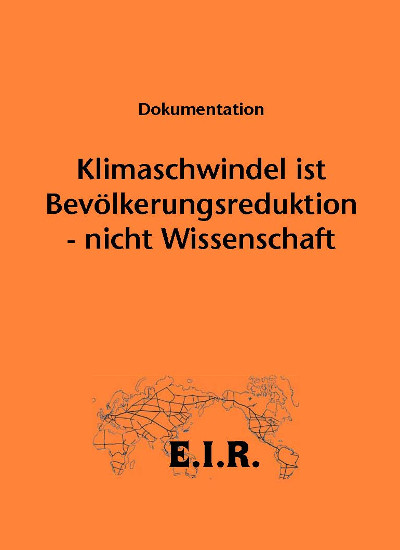
Klimaschwindel ist Bevölkerungsreduktion
– nicht Wissenschaft
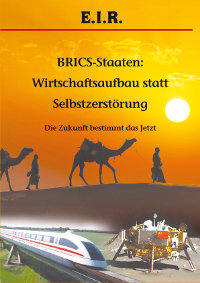
BRICS-Staaten: Wirtschaftsaufbau
statt Selbstzerstörung
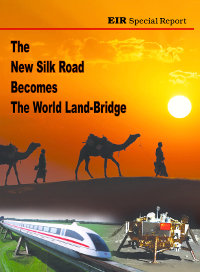
The New Silk Road Becomes The
World Land-Bridge
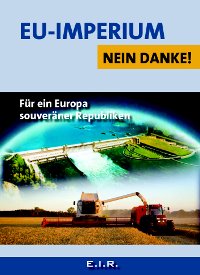
EU-Imperium Nein Danke! Für ein Europa souveräner Republiken
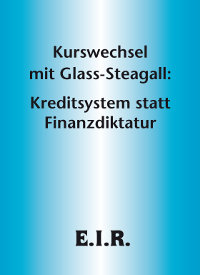
Kurswechsel mit Glass-Steagall: Kreditsystem statt Finanzdiktatur
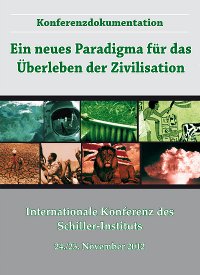
Ein neues Paradigma
für das Überleben
der Zivilisation
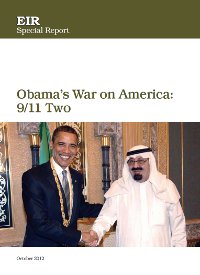
Obama's War on America: 9/11 Two

Neuer Kurs für die Welt:
Großprojekte statt grüner Deindustrialisierung

Statt Finanzkrach
und Kriegsgefahr:
Entwicklung der Welt!
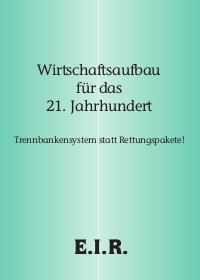
Wirtschaftsaufbau für
das 21. Jahrhundert - Trennbankensystem
statt Rettungspakete!
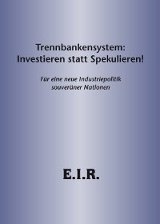
Trennbankensystem:
Investieren statt Spekulieren! Für eine neue Industriepolitik souveräner Nationen
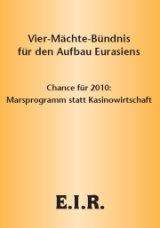
Vier-Mächte-Bündnis für den Aufbau Eurasiens - Chance für 2010: Marsprogramm statt Kasinowirtschaft
Mit Leseprobe:
Vorwort von Helga Zepp-LaRouche
und Es tut sich was in Asien von Lyndon LaRouche

Der nächste Schritt: Wiederaufbau der Realwirtschaft
oder
The following presentation was given by the Ethiopian Consul-General in Frankfurt, Mr. Mehreteab Mulugeta Haile, to an E.I.R. seminar in Frankfurt, Germany, on April 29, on the theme “Germany and the BRICS countries can create a new credit system for global development”.
I would like to thank the Schiller Institute and the EIR for inviting me and my colleague. I will present to you the current situation, especially the economic situation, of my country Ethiopia, and our relationship with the BRICS countries. As most of you know, Ethiopia is a country in Africa located in the Horn of Africa. It's a federal system country, and as my Malaysian predecessor said of his country, we have a parliamentary democracy, with a population of around 90 million and around 1,1 million sq km of land. We have reached the cultivatable arable land of 513,000 square km, which is around 45% of the country's land.
Our main language in Ethiopia is Amharic, which makes us very different from the other African countries. We have our own alphabet and our own language, but English is the working language mostly, and the business language in our country.
With the change of government in 1991, there was a drastic change that came to Ethiopia. As most of you remember, Ethiopia was known for drought and famine, with pictures of the skinny people you used to see on TV. But that has changed, and it has gone for good.
Now, Ethiopia is nationally food-secure, and self-sufficient, and we are working – just as my predecessor said that Malaysia is working to become a developed nation by 2020 – we are working to become a middle income country by 2025, so we are following in your footsteps.
In this regard, we are implementing different five-year plans. Currently, we are in our Growth and Transformation Plan. From 1991 until five years ago, we had been following the Agricultural Development-led Industrialization Policy, but our government had the opinion that this way of doing business, or development, should be enhanced and should be accelerated. So, five years ago, we had a plan that we call the Growth and Transformation Plan 1. Our aim was to grow annually by 14% of GDP, but so far we have had on average for the last four years – because I do not have the statistics for this year – we have been growing at about 10,9 or 10.8%. And Ethiopia is one of the fastest growing countries in the world at this time. Because of these policies and measures which have been taken by the government, our GDP per capita has increased from 100 US dollars to now 550 US dollars. And we are looking forward to increase this figure by 2025, to reach the middle-income countries.
To share with you some of the latest economic indicators, Ethiopia's GDP by 2012 and 2013 is around 47 billion US dollars. And the economy as I said has been growing on an average of 10,9% in the last decade. This year, we expect to grow by 11,3%. Agriculture still accounted for the majority and it's around 46% of GDP in 2013, in contrast to 51% share in 2007.
This sector generates over 70% export values and it employees about 85% of the total labor force. While the agricultural sector has diminished from 51% to 43%, the share of the services sector has increased over the last decade, and reached 45% in 2013, up from 39.8% in 2007.
Unfortunately, the share of industry remains at around 12%. So, from next July, we are going to have the next five year plan, which is the GTP No. 2, and our focus will be in the manufacturing area, so that the share of industry will increase from the 12% it now has. When we see the external sector, Ethiopia generated 3.25 billion from its exports in 2013 and 2014, and this was 5,6 % higher than the year before. As you all know, our major exports are agricultural products, and as Ethiopia is the origin of coffee – coffee came from Ethiopia – our major export is coffee. Then you have oilseeds, gold, minerals, flour and live animals. The total imports reached 13.7 billion US dollars, showing an increase of 19.7% compared to 2012 and 2013. Our major imports are capital goods, consumer goods, fuel and semi-finished goods.
In regard to investment, we are open to foreign direct investment, except for three sectors : the financial sector, the telecom sector and the airlines or aviation sector, which means more than 18 passenger aircraft.
In that regard, we have been inviting investors from all countries, and the FDI is to reach one billion in the first 9 months of last year. The investment inflow has been increasing and we are expecting a further increase. In regard to the increase in the different sectors, agriculture has been growing by 7.1% in 2012 and 2013, while industry for 2013 rose by 18.5 % and services grew by 9.9 % in 2012 and 2013. So we are expecting this growth to continue and we are looking forward to further industrial growth.
As I said, our investments are environment friendly. We have different investment opportunities in Ethiopia. Our major investments areas are the manufacturing sector. All the manufacturing sectors are open for FDI, as well as agriculture, especially in micro-production, animal production and commercial farming. The ICT , generation and transformation and supply of electrical energy, hotel and tourism, and construction, the real estate development, education and training, the health services, publishing and other engineering works are open to invest in.
Also, currently we are developing different industrial zones. Ethiopia has identified five different areas in the country for the development of industrial zones, and we hope they will enhance our industrialization program.
When we come to the different relations we have with the BRICS countries, I would like to mention that the relationship with all the member states has been going on strongly – some of them very strong, others comparatively less, but with China and India, we have very close economic relationships. The bilateral relationships started long ago, with Russia, during the 17th Century, and then with India, we started in 1948, and then with Brazil in 1961, and with China in 1970, and with South Africa when they got their independence. Our main economic relationship with the BRICS is focussed on trade. As I mentioned earlier, Ethiopia is exporting, just as to other countries, mainly exports primary goods to these countries, and we import from the BRICS countries mostly manufactured goods, and we use these imports for different purposes, and unfortunately, when you see it in general, we have a trade deficit, in our relationships with the BRICS countries.
So we are working very much to diversify exports. We are trying to identify in which areas we can be competitive. And we are trying to exploit enormous unexplored natural resources, which can contribute to the increase of trade with these countries.
The other area of cooperation with these countries is in development finance. We got a lot of development finance from these countries. Our major financiers so far are Brazil, Russia and India, especially on railway projects. Currently, we are trying to build 5,000 km of railway connecting different cities of the country with the port of Djibouti and other outlets to the sea.
In that regard, we are constructing about 587 km of railway and for this project we have secured so far loans from Brazil, Russia and India. We are negotiating with the other two countries to be involved in this project. From all these BRICS countries, major development finance is coming from China. As you know, the Chinese have developed the China-Africa Development Fund, and we have a lot of development finance coming from them, not only in government projects, but also in investments, like leather factories, cement plants, a glass factory. Also the Chinese companies are bringing finance in the development of industrial zones, in the telecom industry they are creating projects and for a toll road, and distribution lines.
We also have investments coming, as I said, from these countries, both from the government side and from private investors, and they have reached about 2 billion. For the last decade, we have had around 5 bn investments coming to Ethiopia. Of this, around 3 bn came from Chinese and Indian companies. We are also trying to bring investment from the other BRICS countries.
The relationship we have with the BRICS countries contributes to our aviation industry. Ethiopian Airlines has been operating for the last 62 years, and almost with all BRICS countries, we have connectivity now. Ethiopian Airlines flies to these countries and to some of them, it is the only African country which connects these countries to Africa, and from there to Europe and other places. So, this relationship helps us to develop our aviation industry as well.
Finally, I just want to comment a bit about the paradigm shift, which Madam Helga Zepp-LaRouche mentioned. The African Union is developing a vision for the next 50 years, which is called the AU in 2063. This is work toward the paradigm shift. Agenda 2063 “is an approach to how the continent should effectively learn from the lessons of the past, and build on progress now underway, and strategically exploit all possible opportunities available in the immediate and medium-term, so as to ensure positive socio-economic transformation within the next 50 years.”
So I think we are also following suit of this paradigm shift.
Thank you very much.